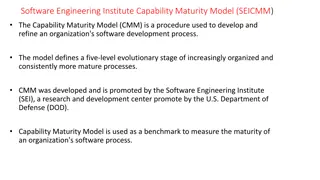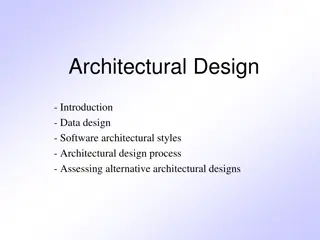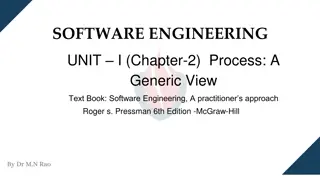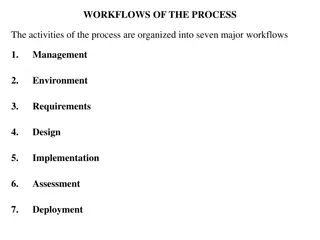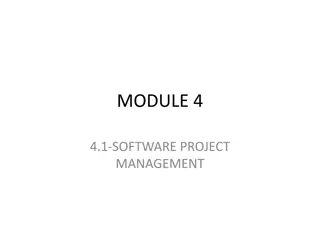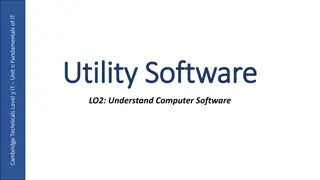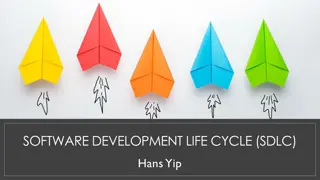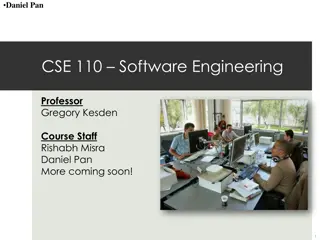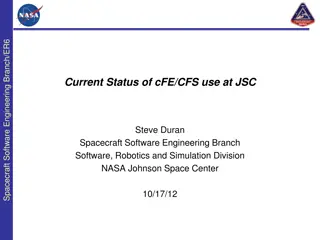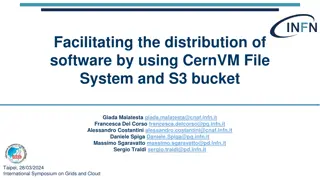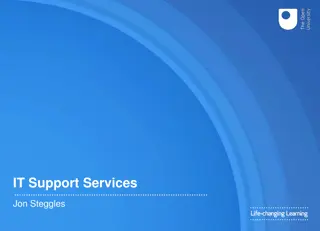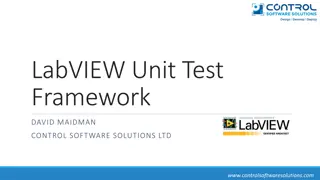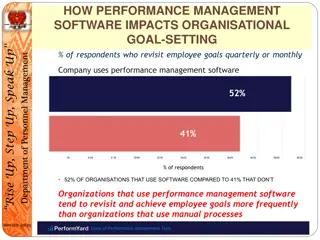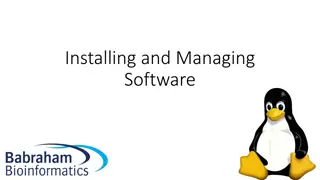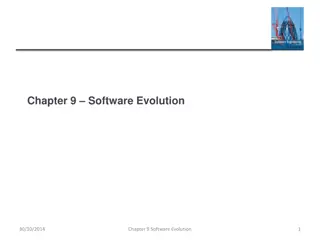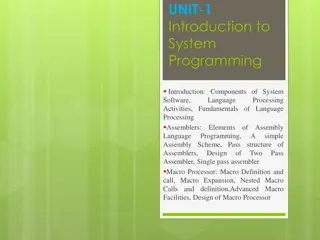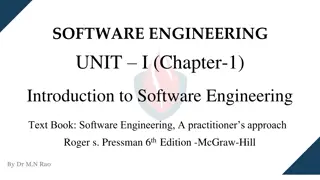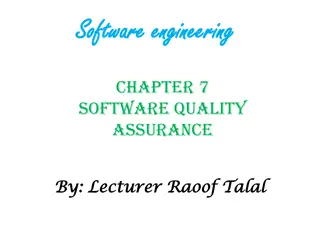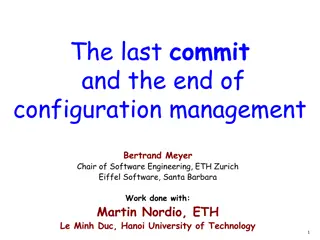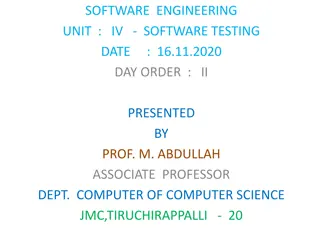Understanding PM-CMM: A Framework for Effective Software Process Management
The People Management Capability Maturity Model (PM-CMM), developed by the Software Engineering Institute (SEI) of Carnegie Mellon University, outlines key elements for enhancing software processes. It defines five maturity levels, from disorganized to constantly improving processes. By focusing on key practice areas like recruitment, performance management, and team development, organizations can attract, develop, and retain talented staff. Not utilizing PM can lead to delays, costs, resource wastage, quality issues, and damage to reputation.
Download Presentation

Please find below an Image/Link to download the presentation.
The content on the website is provided AS IS for your information and personal use only. It may not be sold, licensed, or shared on other websites without obtaining consent from the author. Download presentation by click this link. If you encounter any issues during the download, it is possible that the publisher has removed the file from their server.
E N D
Presentation Transcript
PM - CMM People Management - Capability Maturity Model (PM - CMM) Developed by - The Software Engineering Institute (SEI) Of Carnegie Mellon University. Framework, that describes The key elements of an effective software process.
By using PM-CMM model Software organizations - become capable - for - Undertaking complex applications Which ultimately attracts or motivates the talented people
CMM's Five Maturity Levels of Software Processes At the initial level, - - - processes are disorganized, not sufficiently defined and documented so, they cant be replicated. At the repeatable level, basic project management techniques are established, i.e. processes are - well established, defined, and documented. - so, they can be replicated.
At the defined level, - - - - integration. an organization has developed its own standard software process through greater attention to documentation, standardization, and At the managed level, - an organization monitors and controls - its own processes - through data collection and analysis.
At the optimizing level, - processes are constantly being improved - through monitoring feedback - - - - and introducing innovative processes to better serve the organization's particular needs.
PM-CMM defines Following key practice areas for software people - Recruitment & Selection - Performance management - Training & Career development - Developing teams and culture - Structuring the work & organization
Practices in the areas above improve the ability of organizations - - to attract, develop, motivate, and retain a talented staff. To improve - the performance of individuals and teams
Consequences of not using PM (People Mgmt) Delay Cost Waste of resources Quality Dissatisfaction Reputation


